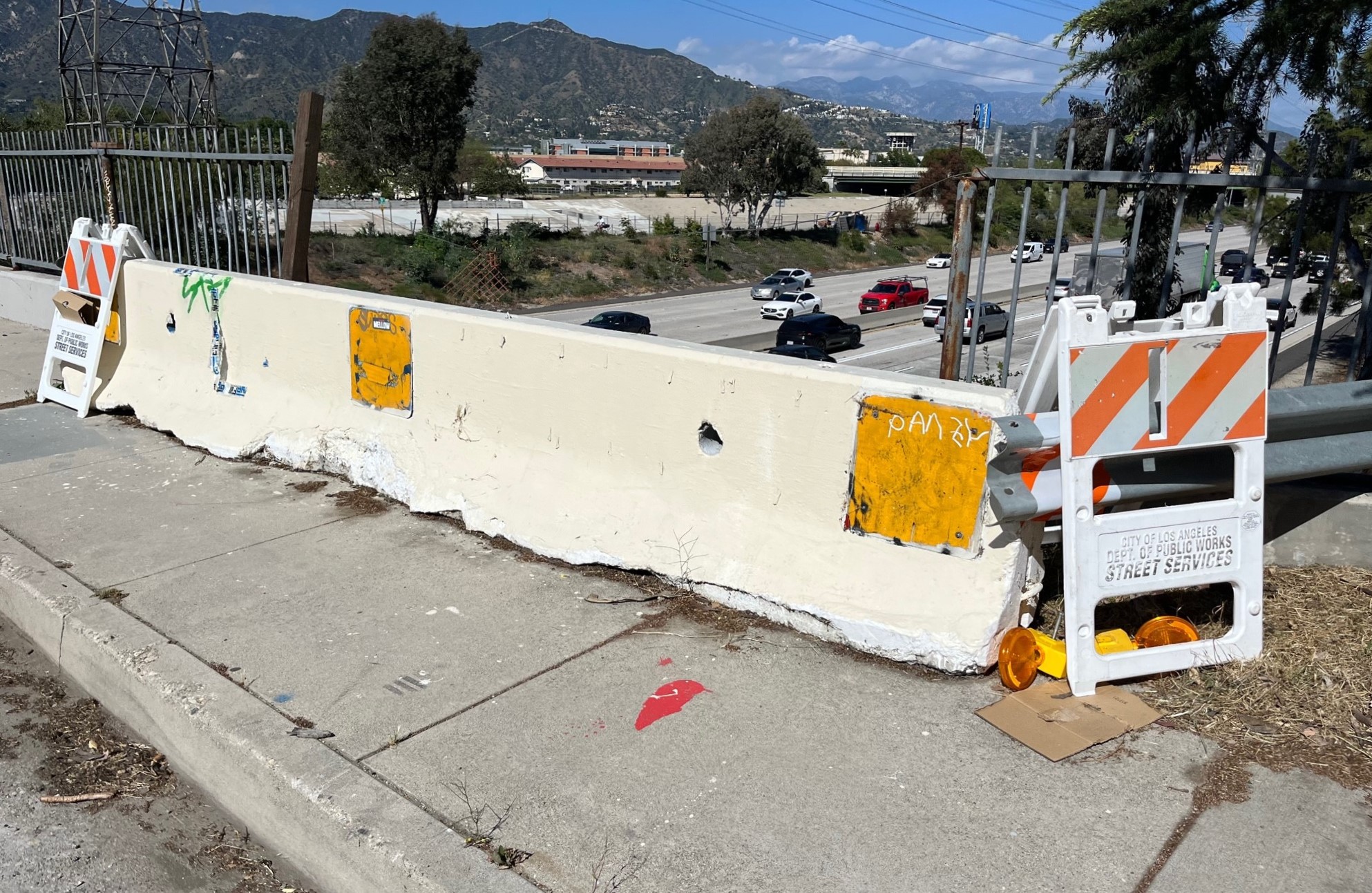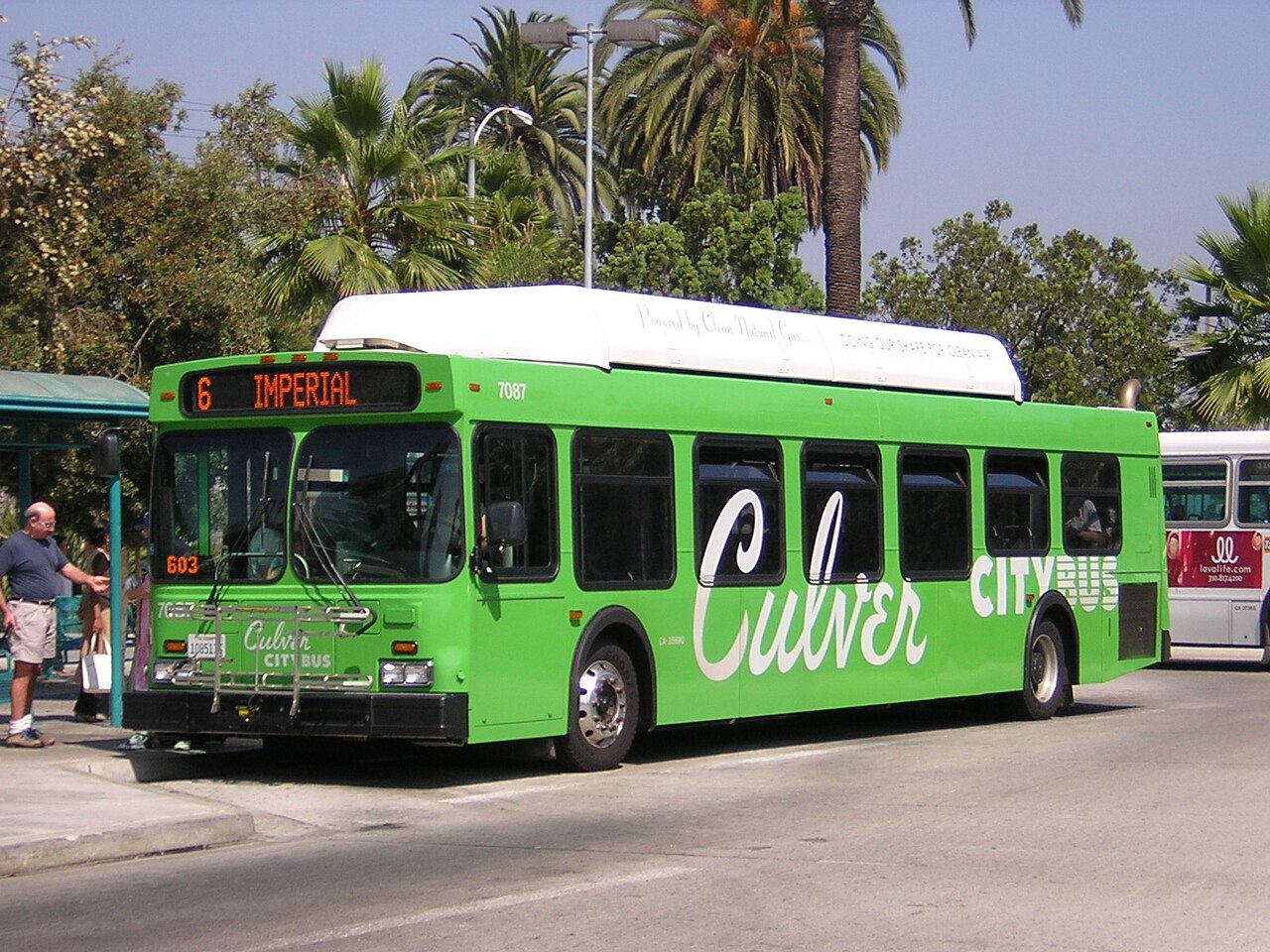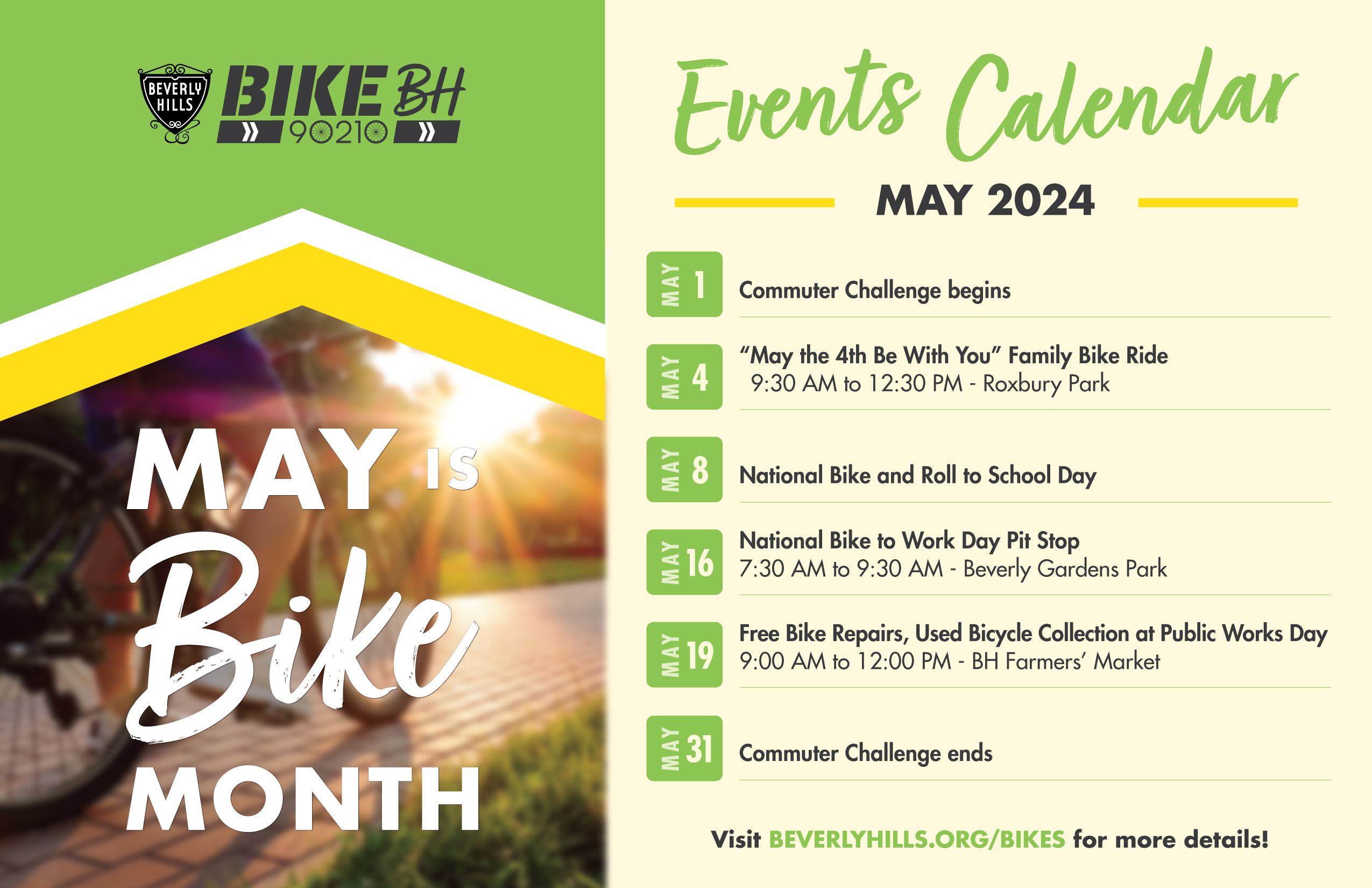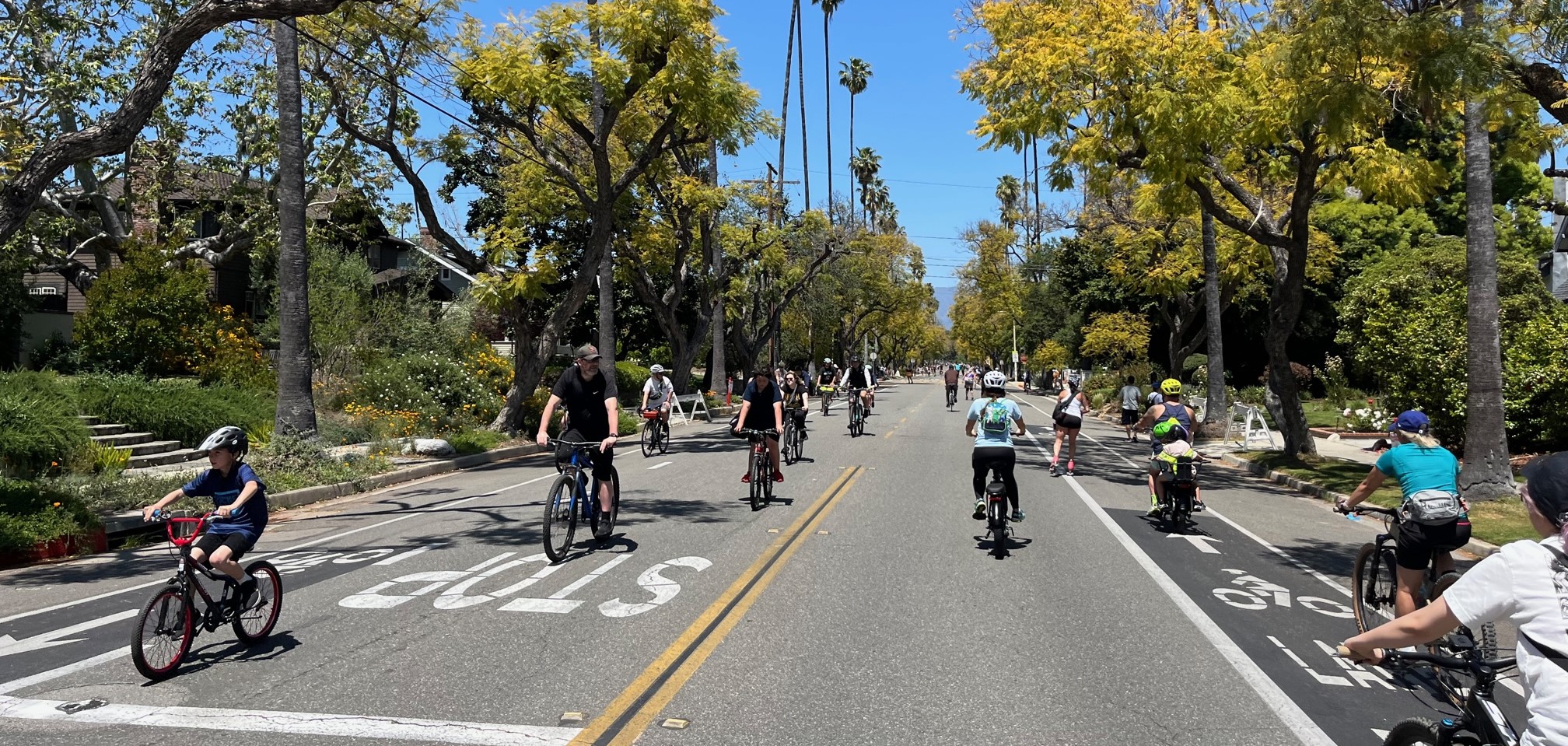Metro Moves Affordable Housing Projects in Boyle Heights Forward, Returns Grocery Store Project to Drawing Board
12:13 PM PST on December 4, 2015
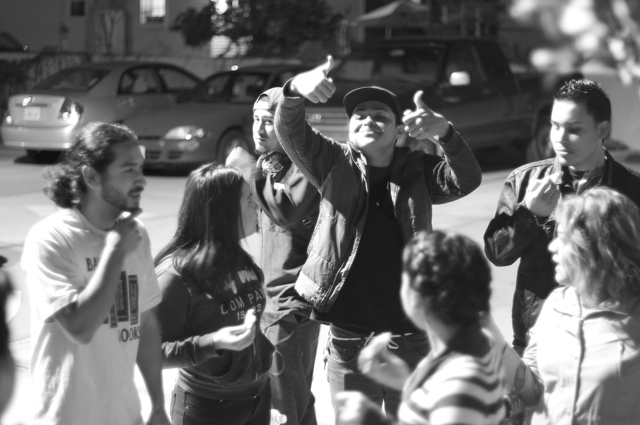
At Thursday's Metro Board meeting, boardmembers took action on several items pertaining to the future of Metro-owned lots in Boyle Heights. The Board approved motions allowing affordable housing projects at 1st and Soto, Cesar Chavez and Soto, and 1st and Lorena to continue moving forward, while rescinding the agreement with McCormack Baron Salazar regarding their plans to build a grocery store at Cesar Chavez and Fickett.
The actions on the affordable housing projects were a long time coming.
At the end of 2014, Metro had been moving full-steam ahead to approve a slew of projects set for Metro-owned properties in Boyle Heights when the deafening uproar over the proposed makeover of Mariachi Plaza ground everything to a halt.
Recognizing due diligence had not been done with regard to community outreach, the Board slowed down the process by granting “phased” or “interim” Exclusive Negotiated Agreements (ENAs) for affordable housing projects from Abode Communities (Cesar Chavez and Soto) and East L.A. Community Corporation (ELACC) and Bridge Housing Corporation (on the two lots at 1st and Soto). These new agreements gave the developers a three-month window to conduct intensive community outreach and incorporate feedback into site plans.
Metro also granted an extension of the existing 18-month ENA to A Community of Friends (ACOF), a developer which, since June of 2013, has struggled to get the plans right for supportive affordable housing on the lot at Lorena and 1st Streets. And, it scrapped the controversial project slated for Mariachi Plaza altogether. [The urban design/architecture firm of Gwynne Pugh Urban Studio (with the architectural team of Perkins + Will and DakeLuna) will conduct design charrettes and community outreach to help create the Development Guidelines for both Mariachi Plaza and the Cesar Chavez/Fickett project in early 2016.]*
Still feeling steamrolled, the youth of CALO YouthBuild in Boyle Heights fought to see Metro extend the interim-ENA period from three to six months. They also asked that Metro revamp their advisory committee process, which has tended to lack transparency and relied heavily on the usual suspects for "community" input. The youth wanted to ensure that a wider range of stakeholders would be included in the conversation about the future of the community in a way that “afforded [them] the time needed to understand how these projects will impact their lives.”

The extra time given to the affordable housing developers proved very valuable.
In the spring, ELACC, Bridge Housing, and Abode were able to hold a forum at Casa del Mexicano, where well over 100 area residents gathered to talk about gentrification and their housing concerns. Over the summer, the outreach continued via smaller focus groups comprised of youth, artists, property owners, business owners, and members of local community organizations. In the group sessions, the developers were able to get more specifics about the kinds of amenities stakeholders hoped to see built into the commercial and community spaces within the affordable housing projects. Then, at an open house in August, the findings were presented to the community for final comment.
Getting a clearer sense of what the community wanted from these projects helped the developers think about out how they might build out the commercial and community spaces and the funding they will need to do so. This matters because funding for affordable housing generally does not give developers much leeway with regard to how they build out retail spaces. Nor does it cover efforts to reconfigure those spaces after they've already been built. And the kinds of smaller businesses or community services Boyle Heights residents would like to see populate those sites tend not to have the resources to do much in the way of configuring spaces, either. So having spaces worked out to fit potential types of tenants ahead of time is in everyone's interest.
While the more intensive community engagement process around these projects was not always smooth and residents still have questions about the extent to which they will be able to access the affordable units, the community ties built during the process seem to have helped quell some of the concerns residents had about the intentions of the developers. The sessions opened the door for discussions between Abode and Self Help Graphics regarding the potential use of the commercial space at Cesar Chavez and Soto for a satellite youth program. And the process seems to have emboldened ELACC to be more innovative in its approach to its (non-Metro) Cielito Lindo project at 1st and Soto: they (in collaboration with Union de Vecinos) just signed a right-of-return agreement with tenants living in the housing slated for redevelopment.
Cesar Chavez and Soto Site: Abode Communities, 77 Units of Affordable Housing
Metro's affirmative vote Thursday grants Abode Communities a full 18-month ENA. This allows Abode to begin undertaking the planning necessary to define the scope and feasibility of the 77-unit project proposed for Cesar Chavez and Soto. The project remains similar to the original proposal: offering 54 two-bedroom units and 23 three-bedroom units, as well as 8,000 square feet of commercial space. (For reminders of the specifics of the project, see here and here).
The full ENA now allows Abode to more thoroughly study the feasibility of developing the proposed project, do the planning, design, and entitlement work necessary to meet CEQA guidelines, and negotiate key terms and conditions to be included in a joint development agreement and ground lease with Metro. Metro staff will report back to the Board regarding the progress of the project after the 18 months.

1st and Soto Site: Bridge Housing and ELACC, 65 Units of Affordable Housing
While the Boyle Heights Neighborhood Council recently approved the ELACC/Bridge Housing project, Metro approved a 6-month extension of the interim ENA for that project (in the event that the project could not be presented to the BHNC before the holidays). The Board appears to expect that they should be able to approve the 18-month ENA for the project next spring, if not earlier.**
It should be noted that the project will be somewhat altered from its original plans due to the inability of ELACC/Bridge Housing to acquire a parcel of land on the southeast corner of 1st and Soto.
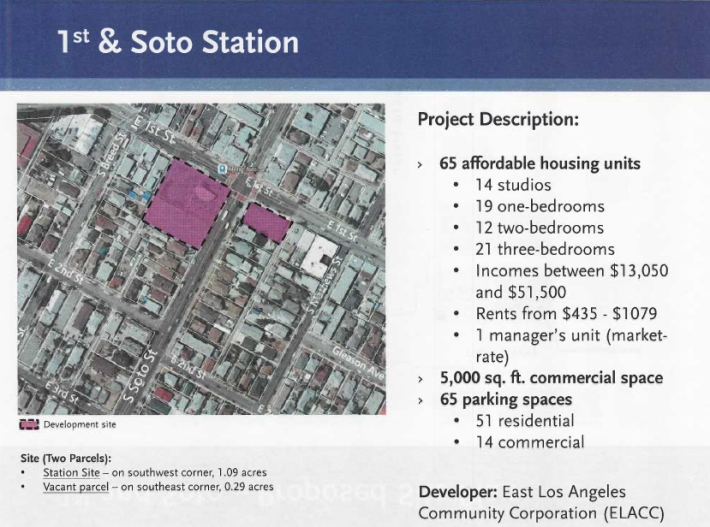
Instead of 88 units, with 39 specifically reserved for seniors, the project will offer 65 affordable units, and possibly a community center (below).
Metro reports that the developers have also been working with Metro operations staff to evaluate the feasibility of utilizing part of the adjacent plaza at the Soto Gold Line station for landscaping.
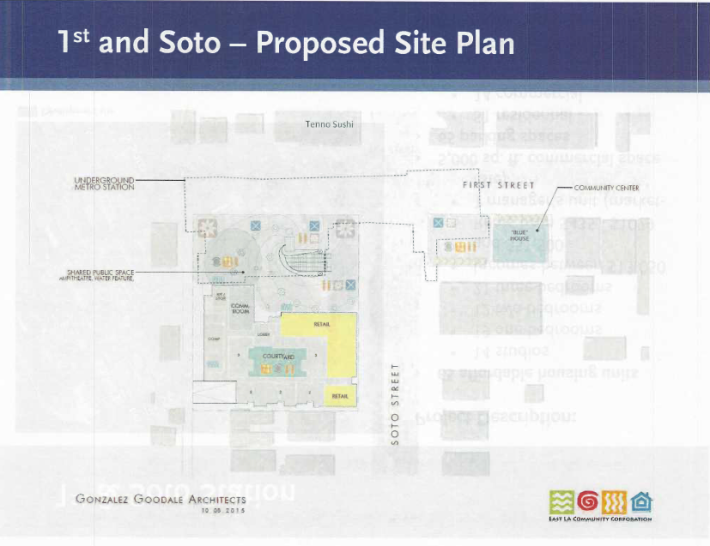
1st and Lorena: A Community of Friends, 49 Units of Affordable Housing and Housing for Homeless/Disabled Veterans
After hearing testimony both in favor and against the project, the Board also voted unanimously in favor of granting A Community of Friends yet another extension to the original 18-month ENA first granted in June of 2013.
The embattled project, first proposed in 2006, originally included 48 affordable housing units - 24 units for special needs and 24 family units, with one manager’s unit, and 10,000 square feet of ground floor commercial space. In 2013, the project was adjusted to include 53 units, with half still being reserved for the formerly homeless and the mentally ill, while the commercial space was reduced to 5,000 square feet. Although the developer had said a power substation on site meant they couldn't offer as much retail space as they had originally planned, the drastic shift earned ACOF the opposition of Jose Huizar, councilmember for the district and a Metro Board member at the time. Huizar was concerned that the drop in retail and parking space would heavily curtail any boost in economic activity the project was expected to have generated for the surrounding areas. Community members also opposed the project, worrying that the reduction in parking would mean that the area -- already very congested on the weekends, as the site is adjacent to the popular El Mercado -- would become inaccessible. They also feared that ACOF wasn't doing enough planning for the kinds of services their special needs residents would require, potentially putting area children at risk.
ACOF went back to the drawing board this spring and modified the project to include 24 units of affordable housing for disabled and/or homeless veterans and 24 units of affordable family housing, with sixty percent of the units being reserved for individuals/families with 30% AMI. In response to community feedback, they also reworked plans for the commercial space to include child care and fitness facilities, and approximately 5,000 square feet of general retail.
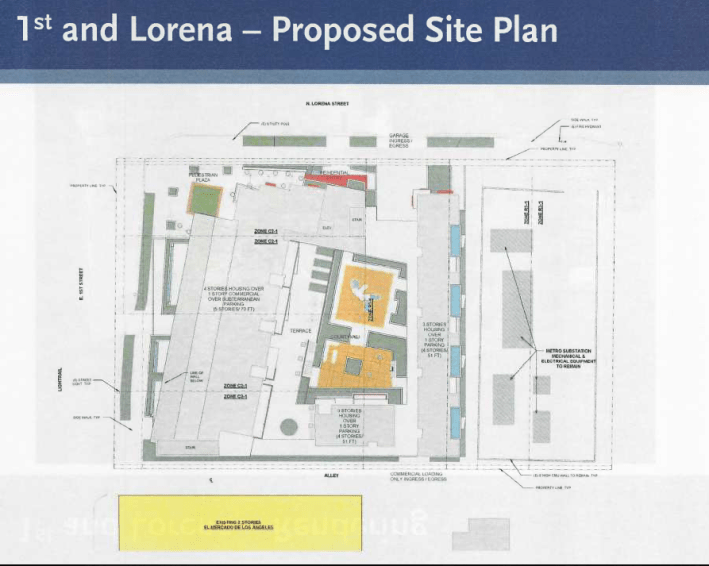
ACOF's plans still had opponents: a number of the long-standing objectors to the project spoke up at the meeting to say they would prefer to see a cultural center there. But ACOF had supporters too, this time in the form of Union de Vecinos, who applauded their commitment to housing those falling into lower income brackets.
Cesar Chavez and Fickett: McCormack Baron Salazar, Grocery Store
Boyle Heights has long been asking for a grocery store to replace the market lost to make way for the Gold Line. Metro's move to rescind the ENA granted to McCormack Baron Salazar (MBS) to build just such a store means the community is going to have to wait a little longer.
The item was approved on the consent calendar and there was no discussion of why the move was made. The accompanying staff report on the item, however, offered some insight into the property's history.
According to the report, an unnamed developer had submitted an unsolicited proposal for market-rate housing for the Cesar Chavez/Fickett property (along with two others) to Metro back in 2004. When that developer decided to shift their focus from market-rate housing to affordable housing, they brought in MBS to handle that component. Not long after, it appears, the first developer abandoned their interest in the property altogether, essentially leaving it to MBS to develop. As the property turned out to be too small to support both housing and a supermarket, MBS proposed the kind of stand-alone supermarket the community had been clamoring for.
In January of 2013, the Board authorized Metro staff to enter into an ENA with MBS for the supermarket project without ever having opened up the project to a competitive process, something they now seem to regret. The authorized ENA was subsequently never executed. In detailing their reasons for rescinding the ENA, they note that proposals where developers had access to additional land or could offer other "unique betterments" could make for a superior project to the one currently offered by MBS. They also cite the desire to put the project through a community-driven process. Finally, and perhaps most importantly, there is a technical reason to start over: the only way to proceed with the current project would be to approve a sole-source development agreement, as the property is classified as "excess" property (no longer needed for transit purposes). Metro can use a joint-development process for the property, which would allow them to pursue the more community-driven and competitive process they cite as being preferable in this case.
With the ENA now rescinded, the project returns to square one. Metro must undertake community engagement in order to create a new set of Development Guidelines. Those guidelines would then be submitted to the Board for approval, and the Board would then issue a Request for Proposals for the development of the site. That process should begin sometime early next year.
***
*Updated to note a consultant had been selected to conduct outreach for the Mariachi Plaza project.
**Updated to note that the ELACC/Bridge project was approved to move to the ENA phase by the neighborhood council. Thanks to Rey Fukada Salinas and Carla de la Paz for catching the errors.
If you'd like to be kept up-to-date on Metro's joint-development projects, please contact Vivian Rescalvo to be put on Metro's mailing list. She can be reached at rescalvov@metro.net or 213-922-2563.
Sahra is Communities Editor for Streetsblog L.A., covering the intersection of mobility with race, class, history, representation, policing, housing, health, culture, community, and access to the public space in Boyle Heights and South Central Los Angeles.
Stay in touch
Sign up for our free newsletter
More from Streetsblog Los Angeles
Freeway Drivers Keep Slamming into Bridge Railing in Griffith Park
Drivers keep smashing the Riverside Drive Bridge railing - plus a few other Griffith Park bike/walk updates
This Week In Livable Streets
Bike Month, Hyperion street safety, Eastside rail plans, Pasadena transit, CicloIRVINE, Culver City bus service, and more
Active Streets Mission-to-Mission – Open Thread
Tens of thousands of participants biked, walked, skated and scootered on car-free streets through San Gabriel, South Pasadena and Alhambra

